How plastic manufacturers have warped California’s landmark plastics act
By Jeremy Kole, Philip Salata, Shreya Agrawal and Arun Cherukuri
Long Beach, Calif. – On land, Captain Charles Moore’s sea legs give way to his green thumb. His neighbors know him for his front yard farmers market – they come for the fruit, but they stay for the conversation. And he has a lot to say, as the oceanographer who discovered the Great Pacific Garbage Patch.
In 1997, while sailing his research ship, the Alguita, Moore came across the mass of plastic accumulated in the North Pacific gyre that is roughly three times the size of France. The plastic he saw then has now broken down into a toxic soup. It no longer just traps organisms – it has worked its way into their flesh.
Since Moore’s discovery 25 years ago, marine plastic contamination has only gotten worse, but legislation has not matched the magnitude of the problem.
On June 30, 2022, California governor Gavin Newsom signed a law to curb plastic waste, putting the responsibility on plastic manufacturers. Many environmentalists agree that while the bill was long overdue, it could serve as the bellwether to shift the pendulum in the right direction. But Moore has some concerns.
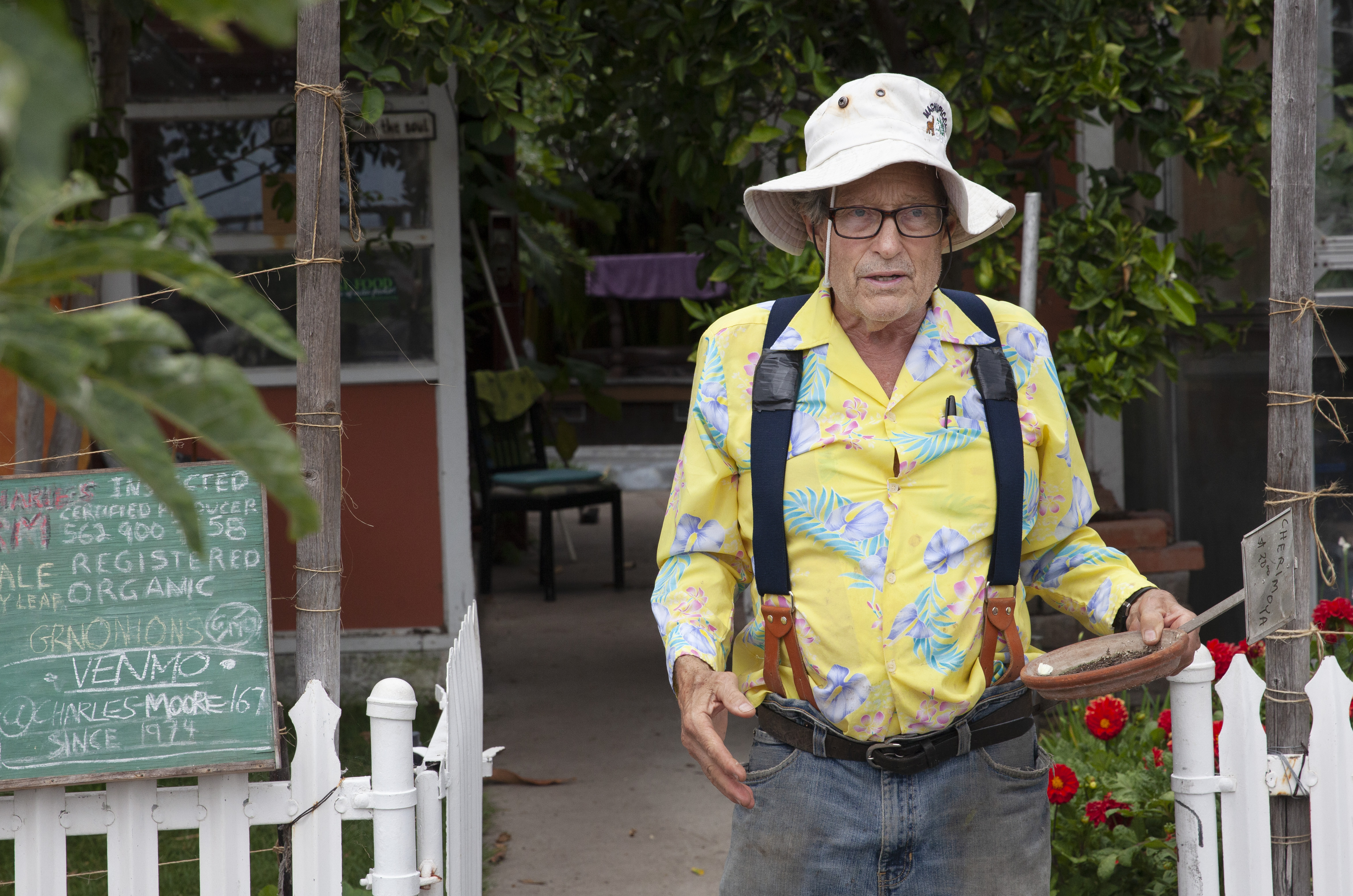
Captain Charles Moore tends his weekly farmers market in Long Beach, Calif. on July 31, 2022. Moore grew up at the house where he still lives and has been cultivating fruits and vegetables for decades. “There is something to be said for permanence,” Moore said.
The Plastic Pollution Prevention and Packaging Producer Responsibility Act started as a far more comprehensive grassroots initiative with stricter regulations, but it failed to gain ground despite feverish lobbying and negotiations.
Opposition from plastic manufacturers resulted in a rush to pass the Act that includes several compromises which undermine its efficacy.
But the real fallout is much graver than that. Instead of limiting the production of single-use plastic, the bill paved the way for the fossil fuel industry to maintain its stronghold in California, one of the world’s largest markets for plastic products.
The act doesn’t outright ban styrofoam, known to be one of the most toxic plastics, and lacks specific language to ban the burning of plastics. It also sets a 10-year timeline to reduce plastics from the market, making purging plastic from the environment a pipe dream.
Will Lorenzi, president of Smart Planet Technologies, an eco-friendly materials engineering company, said, “No one will start making changes until you get close to the dates.”
“It was what I anticipated, a devil's bargain,” said Andy Hattala, Co-Chair of the Climate Reality Project in Los Angeles. “You're always going to be supporting some form of the oil industry.”
“Science generally makes improvements, and in this situation, we can see that with politics you can actually go backwards,” Moore said.
The plastic problem
The plastics revolution took off before World War II, when the demand for efficient, light, and cheap materials prompted the creation of plastic products such as polyethylene, styrofoam, and nylon.
They fueled the war, then fed the post-war boom, during which nearly everything was made of plastic, from windows and doors, bottles and bags, to clothes. It became a cash cow for the fossil fuel industry because most plastic is made from petrochemicals, which are petroleum and natural gas products.
The influence of the plastics industry even made its way into popular culture. According to the 1967 film “The Graduate” starring a young Dustin Hoffman, it was the new way to become rich.
But with the ease of production also came the apparent ease of disposal.
Megan Fieser, a chemist at the University of Southern California whose research focuses on plastic, points out the irony: “Some of the qualities that make plastic really wonderful for these applications also become its flaw when it's thrown away,” she said.
Globally, less than 10 percent of plastic waste is recycled every year. Most non-recyclable plastics are single-use and end up in landfills. The life of single-use plastic is a blip compared to the centuries it takes to degrade.
Due to the mismanagement of waste, much of that plastic ends up in the ocean.
James Fawcett, the former Chief of Planning for the Los Angeles Department of Beaches and Harbors, said that plastic waste usually collects in the city’s drains and rivers all year round, and washes out into the oceans during the winter rains.
Fawcett said the Department of Public Works installed a net to catch the debris, much of which was cups made of styrofoam.
According to the Organization for Economic Cooperation & Development (OECD), by 2060, the amount of plastic buildup in rivers, lakes, and oceans will more than triple to about a billion metric tons.
Sea turtles are especially vulnerable to plastic pollution. To them, bits of floating, translucent plastic resemble jellyfish and algae, which are significant parts of turtles’ diets. A research study by the University of Queensland suggests that more than half of sea turtles worldwide have ingested marine debris.
“Most turtles are endangered or threatened, so anything that happens to them is a potential threat to the entire species,” said Jill Sohm, a marine biologist at the Wrigley Institute for Environmental Studies on Catalina Island.
When plastic waste enters the marine environment, it breaks down into smaller pieces, known as microplastics. They are ubiquitous in marine waters worldwide, yet harder to see because of their small size. Many scientists believe they are a bigger problem for the oceans than larger plastics, but their impacts on organisms are not yet well known.
Microplastics have been found in filter feeders and certain fish species, which ingest these particles with their food. A study has shown that microplastics can alter behavior within fish.
Plastic lingers in organic bodies for decades because organisms normally cannot process toxic chemicals.
“They might be in small concentrations at the bottom of the food chain, but then if another organism eats a lot of the smaller [organisms], they might have the potential to ingest a lot of microplastics,” said Sohm.
The Plastics Act: landmark or landfill?
California’s ambitious goal of transitioning into a sustainable economy seemed to take a significant step in the right direction with the passing of the Plastics Act.
According to Hattala of the Climate Reality Project, the Act is the most comprehensive plastics policy to be implemented in California and the United States.
It lays out a plan to cut down single-use plastic packaging and foodware, like plates, straws, and utensils, by a quarter within 10 years. It also states that all single-use packaging and foodware, including non-plastic items, must be recyclable or compostable.

David Fahrion, California Waste & Recycling Association
It is the first plastics act to hold manufacturers responsible for waste generation. It also sets up the California Plastic Pollution Mitigation Fund which collects $500 million per year from manufacturers, as well as an oversight commission to keep them accountable.
Those provisions were a huge deal for Nick Lapis, the Director of Advocacy for Californians Against Waste (CAW). CAW initially opposed the Act, but after it was amended to include the measures, the organization changed its stance.
“We had been trusting the industry to achieve these goals and frankly, that model has not worked in the past,” Lapis said.
Despite support from a majority of environmental organizations, recycling associations, and public interest groups, critics believe the Act is missing the mark. Compromises introduced by plastic manufacturers have led to a call for stricter regulations.

Kristin Kusanovich, tUrn Climate Crisis Awareness & Action
Among them was an outright ban on styrofoam. Instead, the Act allowed for its use if manufacturers complied with the stated recycling goals.
Jenn Engstrom, the State Director of the California Public Interest Research Group, referred to this compromise as a failure to ban “some of the worst low-hanging fruits of single-use plastic.”
Another contested component is the timeline of regulations, as most of the plastic policy outlined in the Act comes into effect in 2032. Lorenzi, of Smart Planet Technologies, believes this will enable plastic manufacturers to delay changing their operations.
“Everybody knows how procrastination works,” he said. “They're giving them a long, long runway, and they're gonna cram the night before.”
Lorenzi pointed out that the European Union banned certain single-use plastics in 2019 and implemented its policy in 2021.
The most critical weakness of the Plastics Act was the omission of language that explicitly prohibits burning plastic, which releases hundreds of toxic chemicals like dioxins and phthalates. These can cause respiratory problems, fertility issues, and cancer.

Jane Williams, California Communities Against Toxics
The Act does state that “incineration” and “combustion” do not qualify as recycling but does not define them, giving the plastics industry the power to interpret these terms in their favor. This incentivizes production because the industry is no longer forced to invest in actual recycling methods – a convenient fix to keep producing more.
“Big plastic has been lying to the public about plastics' recyclability, and now they're trying to take incineration and rebrand it as recycling,” said Jane Williams, Executive Director at California Communities Against Toxics.
Williams believes that the relief fund established by the Plastics Act was a way for the fossil fuel industry to buy its way out of recycling regulations. She also thinks it will establish a concerning precedent.
“The ink wasn’t dry on [Newsom's] signature before the American Chemistry Council's lobbyists were in Congress and New York City,” she said.
Rethinking plastic
In the absence of decisive political action to control plastic waste, many scientists have taken it upon themselves to reimagine recycling.
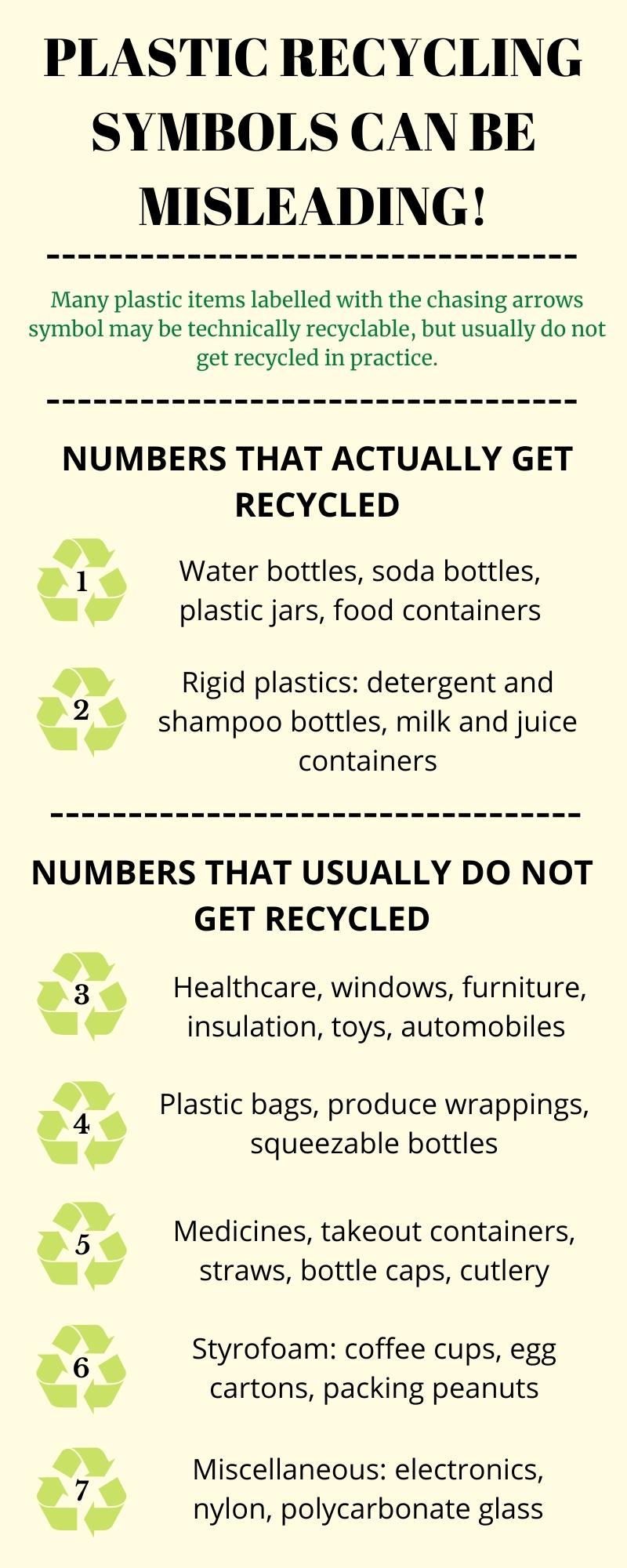
Fieser focuses on finding substitutes for plastic that degrade under natural conditions or can be easily recycled. She is also interested in the idea of upcycling, which would make the waste into something more valuable than it originally was. In this case, she wants to convert plastic waste into fuel.
Travis Williams, who also works with the Wrigley Institute, has an entirely different approach to solving the plastic problem: turning it into medicine.
“We can take the Pacific Garbage Patch, blast it with some catalytic chemistry and feed that to a fungus. And the fungus will make medicinal natural products,” said Williams, referring to the huge mass of plastic discovered by Moore.
Williams and Clay Wang, his collaborator at the USC School of Pharmacy, are using these medicines to create potential cures for diseases like Alzheimer’s and cancer.
He sees the potential to convert billions of pounds of plastic waste into medicine. But he foresees one colossal drawback: do we even need that much?
Community in action
Eighty-three pounds of trash, sixty volunteers, two hours. That was the result of the Surfrider Foundation’s Venice Beach cleanup on July 9, 2022.
Participants came out to feel the potential of collective effort.
For Kelcey Rose, who had just arrived in Los Angeles from Florida the day before, joining the beach cleanup was a way to mingle with likeminded people.
“They should make a Bumble, but with beach clean-ups,” she said, referring to the popular dating app. Her musings, though humorous, underlined a crucial point about individual action. It is a lonely fight and can feel Sisyphean.
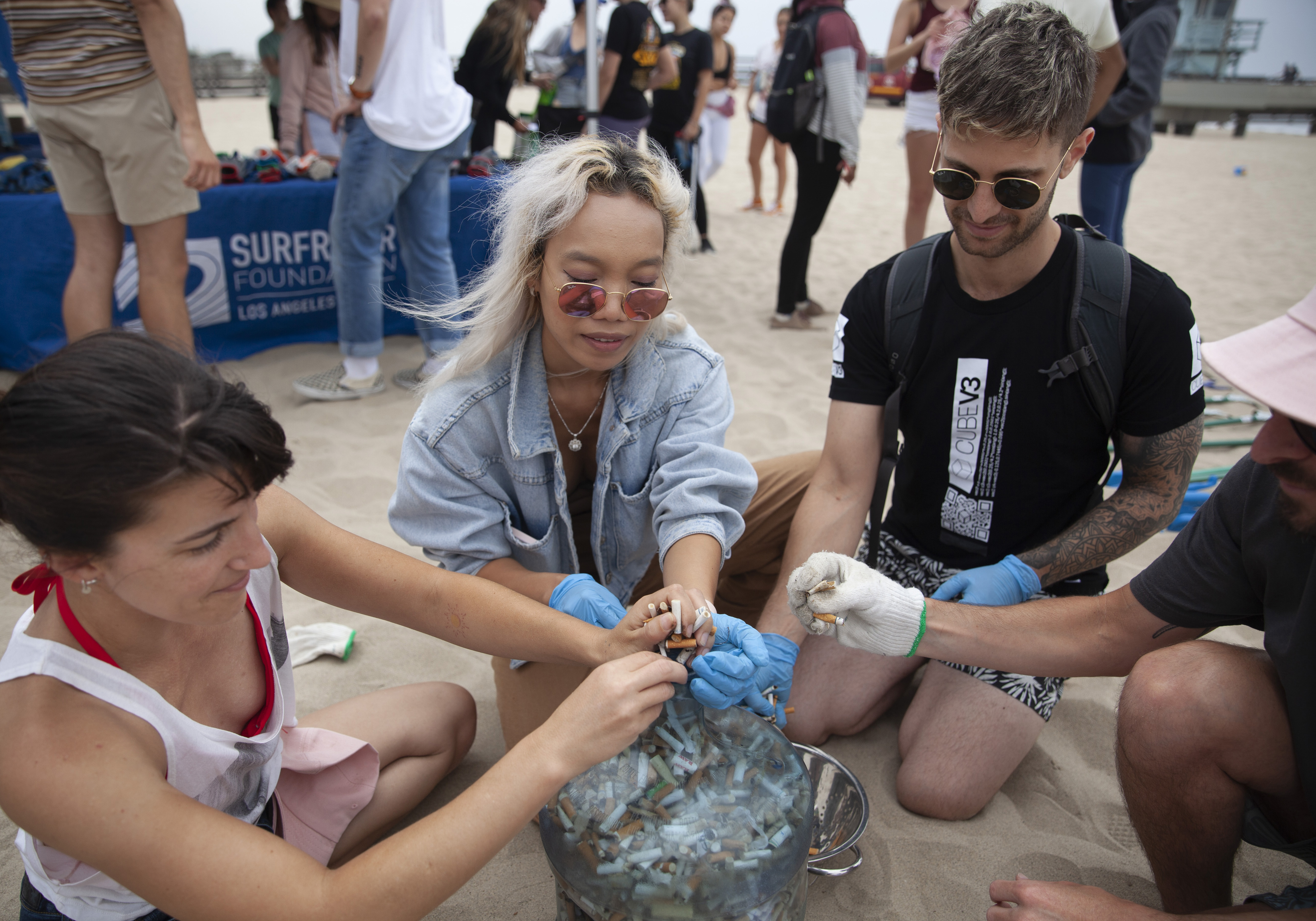
Shannon Roberts (left), Lem Nguyen (center) and Joshua Pickell deposit cigarette butts into a 5-gallon container at a Surfrider Foundation-sponsored beach cleanup at Venice Beach, Calif., on July 16, 2022. Most cigarette filters are made of a fine plastic mesh that breaks apart into microplastics.
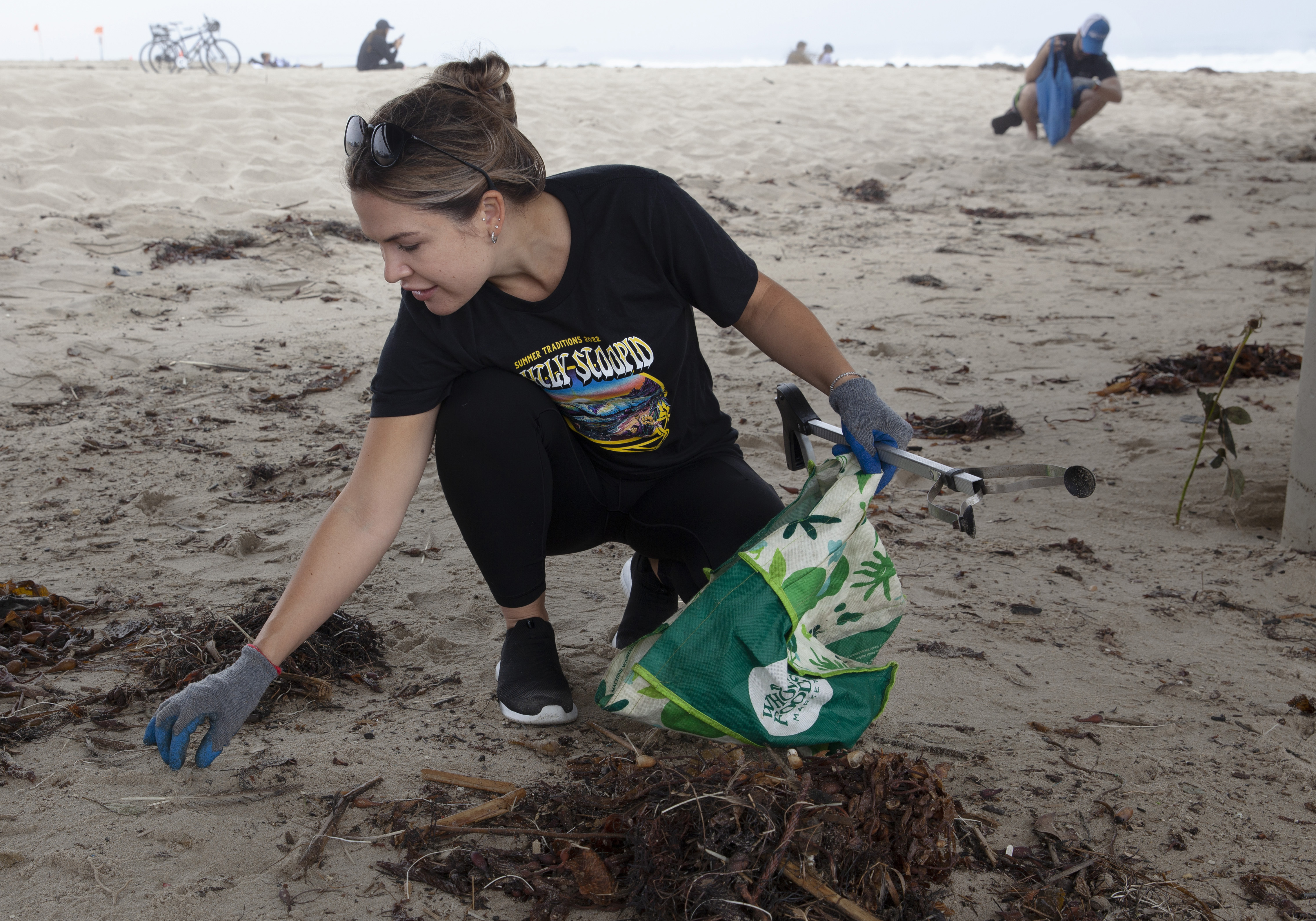
Kelcey Rose collects trash under the pier at Venice Beach, Calif., on July 16, 2022. Rose has been volunteering with Surfrider for years in California as well as Florida where she grew up.
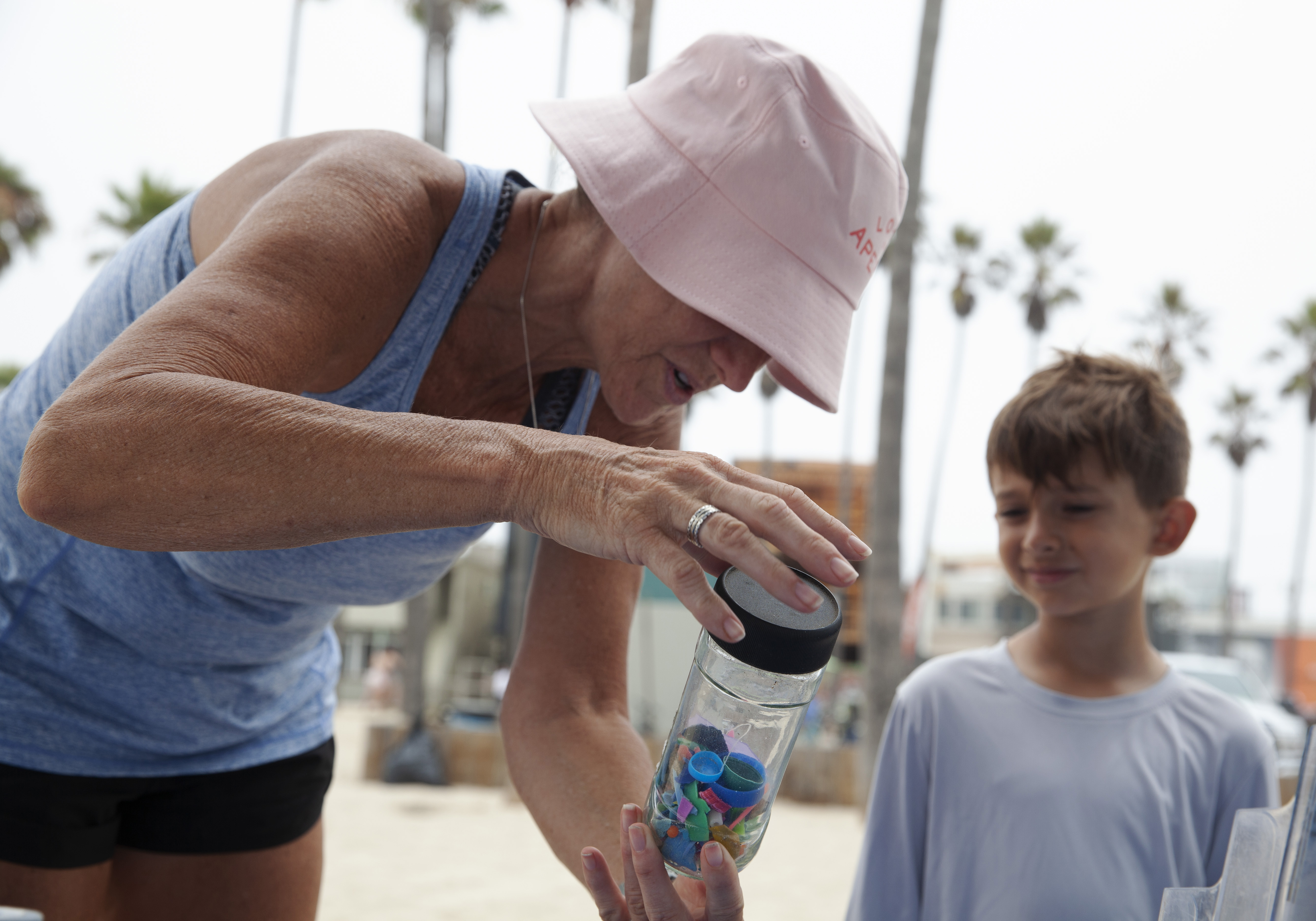
Deidre Larson shows her grandson Leo Ruiz the kinds of trash that collect on the beach at the Surfrider Foundation’s pop-up canopy on July 16, 2022. “I’m helping the planet,” Ruiz said.
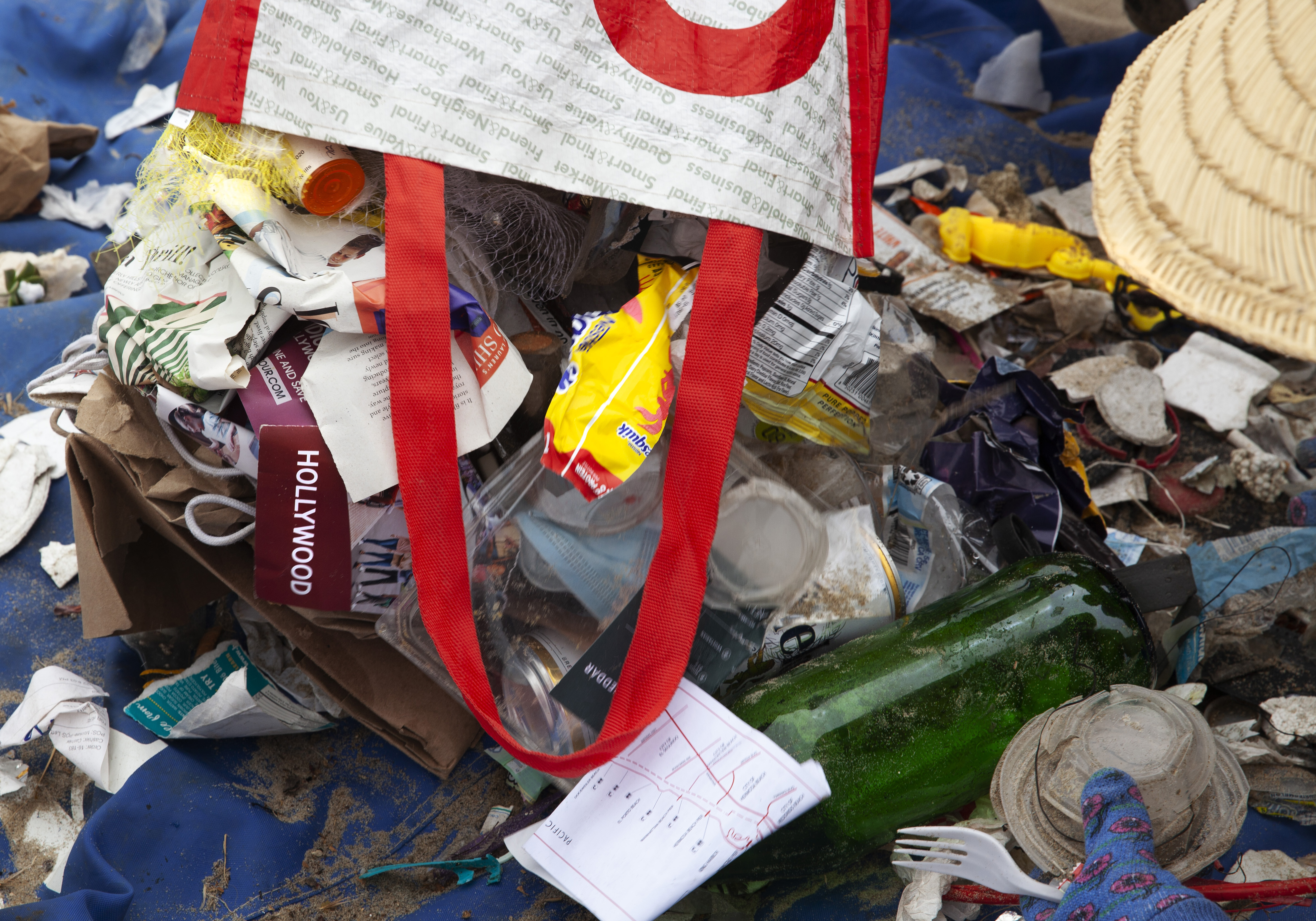
Volunteers dump trash onto a tarp near the Surfrider Foundation’s pop-up canopy at Venice Beach, Calif., on July 16, 2022. They will then sort through the trash, sorting out plastics and recording detailed information on the kinds of items found.
Corporations often try to push off the responsibility of being environmentally conscious onto individuals.
“Saying people have to solve the problem and should feel the guilt about their impact is problematic,” said marine biologist Jill Sohm.
Sohm believes that is hard to achieve when all the choices given to the public by corporations are not sustainable. “What really needs to change are the options from those corporations. They need to take responsibility for the huge impacts that they have,” she said.
Still, changing the culture of consumption is critical. According to Moore, this change can only come about with a fundamental re-evaluation of our needs.
“You want the next best thing, and you throw it away to get the next best thing,” Moore said.
Moore changes course
During the COVID-19 pandemic, Moore docked the Alguita, his 50-foot catamaran converted into a certified research vessel, in the Alamitos Bay Marina to undergo repairs.
Meanwhile, he founded the Moore Institute for Plastic Pollution Research and is currently establishing the first accredited lab to determine the amount of plastic in drinking water.
Moore can be cynical about the relationship between government and industry, but his institute works to connect policy makers with viable solutions to address plastic waste.
He now spends most of his time on dry land, with his efforts split between fostering the new institute and cultivating a garden that he opens up to his neighbors.
To him, local food production is integral to the fight against plastic pollution – from the ground, unpackaged, and directly into the hands of the hungry.

